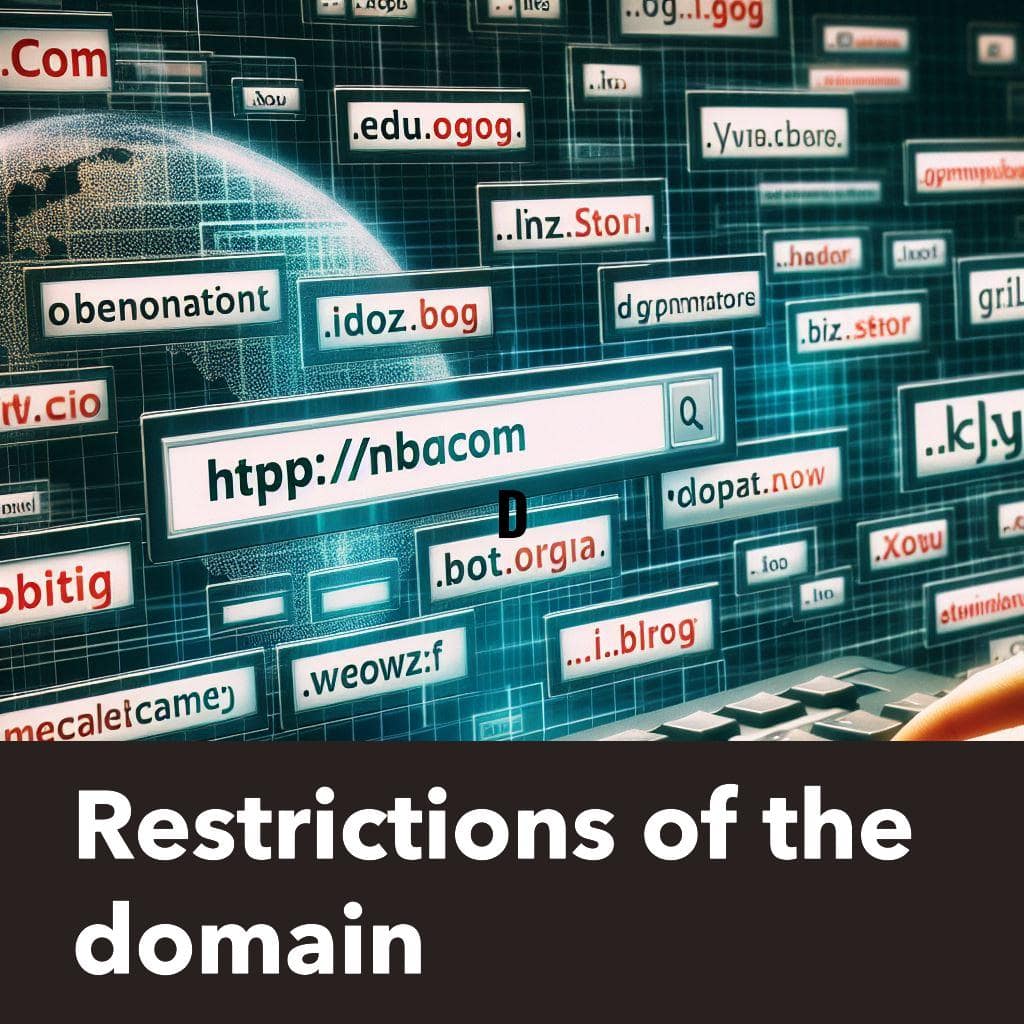In the vast landscape of the digital world, every website, application, or online platform operates within a specific domain. While a domain provides a defined space for activities and interactions, it is crucial to understand the restrictions that come with it. This blog post aims to delve into the limitations and boundaries that shape the functioning of a domain.
Defining the Domain: Before we explore the restrictions, let’s clarify what a domain is. In the context of the internet, a domain refers to a distinct and unique space where websites and online services reside. It is identified by a specific web address, such as www.Digitalnavnit.com. The domain serves as a virtual location, encapsulating the content, data, and functionalities associated with it.
Legal Restrictions of the domain:
One of the primary limitations within a domain is the legal framework that governs it. Different countries have varying regulations regarding online content, privacy, and intellectual property. For instance, a website operating in one country may face legal challenges if it violates the laws of another. Understanding and complying with these legal restrictions is essential for any entity operating within a specific domain.
Content Restrictions of the domain:
Domains often come with content restrictions, either imposed by legal requirements or the policies of the hosting platform. Content that promotes hate speech, violence, or illegal activities is typically prohibited. Platforms may also have guidelines on explicit or adult content. Adhering to these content restrictions is crucial to avoid penalties, removal of content, or even suspension of the entire domain.
Technical Limitations:
Every domain operates within technical constraints. Factors like bandwidth, storage capacity, and server capabilities influence the performance of a website or application. As user traffic increases, a domain may face limitations in handling the load, resulting in slower response times or potential downtime. Understanding these technical limitations is crucial for ensuring a smooth and reliable online experience.
Security and Privacy Constraints:
Ensuring the security and privacy of users within a domain is a paramount concern. Domains need to implement robust security measures to protect against cyber threats, data breaches, and unauthorized access. Compliance with data protection regulations, such as GDPR, is crucial to maintaining user trust and avoiding legal consequences.
Monetization and Business Model Restrictions:
For websites with a commercial aspect, the domain may have restrictions on monetization strategies. Some platforms limit the types of advertisements or affiliate marketing activities that can be employed. Understanding the allowed revenue streams and adhering to the terms of service is crucial for sustainable business operations within a specific domain.
Domain Age and Authority:
Search engines often consider the age and authority of a domain when ranking search results. Newer domains might face challenges in gaining visibility and ranking compared to well-established ones. It’s essential to understand that building domain authority takes time and consistent efforts in content creation, backlink building, and user engagement.
Geographic Restrictions:
Some domains may be subject to geographic restrictions, limiting access to users from specific regions or countries. This can be due to legal requirements, licensing agreements, or content distribution rights. Website owners need to be aware of these restrictions to ensure compliance and to adjust their content or services accordingly.
Resource Utilization Policies:
Hosting providers often impose resource utilization policies to prevent one website from monopolizing server resources. This includes restrictions on CPU usage, memory allocation, and other server-related parameters. Website owners must be mindful of these limits to avoid performance issues and potential penalties from the hosting provider.
Domain Naming Conventions:
Domains must adhere to specific naming conventions and guidelines, which may vary depending on the top-level domain (TLD) chosen. For example, some TLDs have character limits, restrictions on special characters, or specific eligibility criteria. Understanding and following these naming conventions is crucial during the domain registration process.
Social Media Integration:
In today’s interconnected digital landscape, domains are often linked to social media profiles and platforms. Each social media network has its own set of rules and restrictions regarding integration with external websites. Website owners must be aware of these guidelines to optimize their social media presence and ensure a seamless integration that complies with each platform’s policies.
Conclusion:
In navigating the vast digital landscape, recognizing and respecting the restrictions of the domain is essential for a successful online presence. Legal, content, technical, security, and business limitations shape the boundaries within which websites and applications can operate. By understanding and adhering to these restrictions, individuals and businesses can create a more secure, compliant, and user-friendly online environment.
FAQ:
Domains may not be allowed for various reasons, including legal violations, content breaches, or failure to comply with hosting provider policies. Non-compliance with domain registration rules, such as inaccurate information, can also lead to disapproval.
The two fundamental rules of a domain involve legal and technical considerations. Legally, a domain must adhere to local and international laws. Technically, it must follow guidelines regarding naming conventions, character limits, and other technical specifications.
In mathematical terms, a restricted range refers to a set of possible output values, while a domain encompasses all possible input values. In the context of web domains, this analogy can be applied to describe the limitations and inclusiveness of the content or services provided by a website.
A domain name can contain letters, numbers, and hyphens, with certain restrictions depending on the top-level domain (TLD). Special characters are generally not allowed. The length and format may vary, and it should be relevant, memorable, and not infringe on trademarks.
The best domain name depends on the purpose of your website. Generally, a short, memorable, and relevant domain with a reputable TLD like .com is considered ideal. Choose a name that reflects your brand, is easy to spell, and resonates with your target audience.

